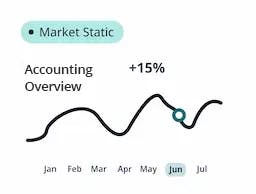
Drew
2025-07-28

For Saudi Arabia-based businesses navigating the evolving world of digital compliance
The era of paper invoices is long gone, and in Saudi Arabia, it’s not just a matter of modernization; it’s the “law”. ZATCA’s e-invoicing regulation has reshaped how businesses issue, process, and store invoices. But more than just pushing companies to “go digital,” the mandate is about something deeper: transparency, standardization, and time control.
So now, here’s the big question for thousands of companies: Is your business fully ZATCA-compliant and ready for Phase 2?
If you’re still unsure about that and stuck somewhere between Phases 1 and 2, then today&pos;s blog is just for you. So, let us show you what ZATCA compliance really means in 2025, how to get there with your accounting system, and how to stay there without headaches.
What Is ZATCA E-Invoicing?
The Zakat, Tax and Customs Authority (ZATCA) rolled out e-Invoicing in Saudi Arabia to simplify, digitize, and control every B2B, B2C, and B2G transaction.
We can say this system ensures that every invoice you generate is secure, tamper-proof, structured, and trackable. It also means the Saudi government can audit your records without waiting for year-end reports or physical submissions.
This entire regulation was introduced in two major phases, and things started to get interesting here.
ZATCA Compliance: A Two-Phase Journey
If you’re running a business in Saudi Arabia, then these phases are not new for you: Phase 1 & Phase 2.
The Generation Phase (Phase 1)
Effective from: December 4, 2021
Just see this as the warm-up round, but no less important. During Phase 1, every VAT-registered business in KSA was required to:
- Stop issuing handwritten or scanned invoices.
- Generate electronic invoices using a ZATCA-compliant system.
- Include mandatory fields like buyer details, timestamps, and QR codes (especially for B2C).
- Make sure every invoice is non-editable after issuance (i.e., temper-proof).
Contact us?
- Archive invoices digitally.
Most companies used this period to upgrade their finance or invoicing software, digitize their sales cycle, and prepare for what’s next.
And then, what came next changed the entire pace.
The Integration Phase (Phase 2)
Began in waves from January 1, 2023
Phase 2 is more than just generating e-invoices. It’s about connecting your entire invoicing system directly to ZATCA’s platform (FATOORA Portal).
This is where businesses were divided into waves depending on their annual revenue. Each wave of this phase had to be ready by its respective deadline.
Here, readiness meant:
- Generating invoices in a specific XML format (UBL 2.1 Standard).
- Pre-clearance for B2C invoices (Where each invoice must be approved before it’s shared).
- Reporting B2B invoices to ZATCA within 24 hours.
- Securely signing invoices with Cryptographic Stamp Identifiers (CSIs).
- Embedding UIDs, hash chains, and digital signatures in the invoice.
Now it may sound a bit technical to you, that’s because it is. Besides being a legal checkmark, Phase 2 is a deep integration between your system and the government’s.
What Does “Being Compliant” Really Mean?
Being compliant doesn’t just mean you’re issuing electronic invoices. It means:
- You’re generating invoices using a ZATCA-approved accounting software.
- Your software meets every mandatory field and formatting requirement.
- You’re able to digitally sign and send invoices within the required timeframe.
- You’re following data security, audit trail, and archiving rules.
- Your finance system is certified, tamper-proof, and capable of phase-based upgrades.
When it comes to ZATCA in Saudi Arabia, compliance isn’t just a one-time setup; it’s a living system that needs to stay aligned with every ZATCA update.
The Reality Check: Are Businesses Really Ready?
With our experience at Peniel Computer, we can definitely say that many businesses think they’re compliant just because they’re generating PDFs digitally. But in reality, compliance goes far beyond that.
Compliant setup involves:
- Automated data flow between invoicing, accounting, and tax reporting.
- Structured XML formatting (not just PDF downloads).
- Error-handling when ZATCA flags a discrepancy.
- Software health monitoring.
- Proper user training to avoid manual mistakes.
If you miss one, your business could face delays, penalties, or data rejections from the authority.
Why ZATCA Compliance Isn’t Just a Finance Concern
ZATCA compliance surely lives in the finance department, but as a matter of fact, e-Invoicing affects sales, customer service, IT, and even operations.
For example:
- If your sales team isn’t aware of the immediate invoice pre-clearing delay, then deals may get stuck.
- Simultaneously, invoices may fail to process if your IT team isn’t monitoring integration health.
- If your accounting software fails to track payment timelines, your finance team might miss crucial cash flow insight.
This is why businesses across the KSA are rethinking how they handle invoicing as a core business function.
Key Features Every ZATCA-Compliant System Should Have
Now that you understand what’s expected, the next question is: Does your current invoicing software cover all this?
Here’s a short checklist your ERP or accounting system must meet:
- Supports UBL 2.1 XML format.
- Has API integration with the FATOORA Portal.
- Can generate CSIs, UUIDs, and hash chains automatically.
- Enables invoice archiving for at least 6 years.
- Produces both Standard and Simplified e-invoices.
- Tracks pre-clearance status and handles ZATCA rejections.
- Delivers QR codes on Simplified invoices.
- Keeps data secure, uneditable, and digitally signed.
- Easily scalable to accommodate future ZATCA changes.
If your software can’t tick every box, it’s time to rethink your setup.
How Peniel Computer Helps You Stay Compliant and Ahead
At Peniel Computer, every day we work with lots of businesses, ranging from startups to enterprise-grade firms across Saudi Arabia, and provide ZATCA-compliant invoicing software that does more than just tick boxes.
Just have a look at what we bring to the table:
ZATCA-Approved e-Invoicing Software: We offer finance software that’s made for any kind of ZATCA-approved e-Invoices. At the same time, it covers XML structuring, QR generation, digital signing, and more.
Migration and Upgrade Support: In case you’re already using a system but not sure if it’s Phase 2 ready, then stop worrying, because we’re here for you. We’ll upgrade your system and bridge the compliance gap between your accounting software and ZATCA.
Dashboards: Now you’ll get full visibility over your invoice statuses, ZATCA API connections, failure alerts, and compliance reports, all in one place.
User Training & Support: This is the place where most companies feel abandoned. But we never disappear after handing over the software. We train your teams to use it efficiently and confidently.
So, with Peniel Computer, being compliant doesn’t have to be confusing, not when you’ve got the right partner behind your system.
Remember, being “ready” for ZATCA means more than the paperwork or policy. It’s about the system behind your business, how it creates, stores, shares, and secures data.
And in today’s climate, where finance and tech are deeply connected, your accounting tools need to be compliance tools too.
So, if your business is still catching up, don’t stress. But don’t wait, either.
Just let Peniel Computer Be Your Compliance Partner. If you’re ready to go from “almost compliant” to fully aligned with ZATCA, we’re just a conversation away.
Reach out today and let’s get your accounting software ZATCA-proof.
Latest News
From Our blog and Event fanpage




